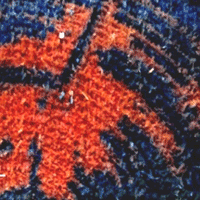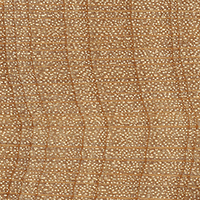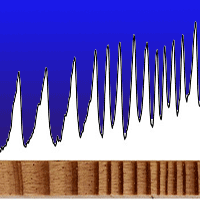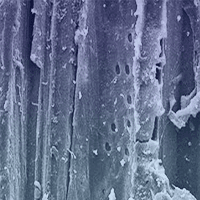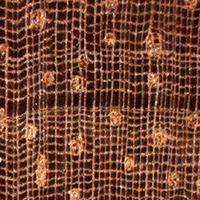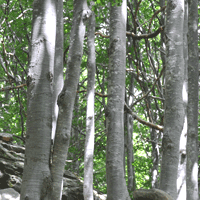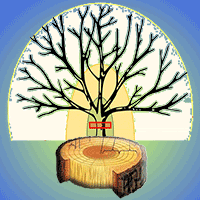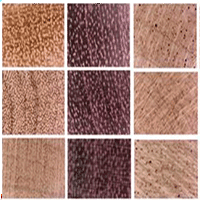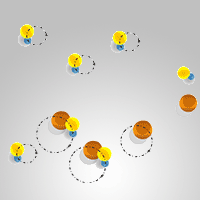
Dielectric properties of paraffin wax emulsion/copper azole compound system treated wood
Yuqing Liao (1), Erni Ma (1), Ru Liu (2)
iForest - Biogeosciences and Forestry, Volume 12, Issue 2, Pages 199-206 (2019)
doi: https://doi.org/10.3832/ifor2879-012
Published: Apr 10, 2019 - Copyright © 2019 SISEF
Research Articles
Abstract
In order to investigate the interactions among the waterproof agent, preservative and wood, the dielectric relaxation was measured for untreated wood and wood samples treated with different paraffin wax emulsion/copper azole (CA) compound systems at oven-dried and air-dried state, respectively. The Cole-Cole plot analysis was then conducted and the results were as follow. At oven-dried state (-60 °C), the dielectric characteristics of paraffin wax emulsion treated wood were basically the same as those of untreated wood; CA treatment increased the dielectric constant but decreased the dielectric loss factor and the trends of these two characteristic parameters were more remarkable at higher CA concentration; the dielectric properties of compound system treated wood under C4A grade were similar to those of CA treated wood but an increase in impregnation of paraffin wax emulsion gave rise to decreased dielectric constant and increased loss factor. At air-dried state (20 °C, 65% RH), compared with untreated samples, both the dielectric constant and loss factor were lower in waterproofing agent treated wood and these parameters reduced with increasing waterproofing agent concentration; for CA treated samples, the values of dielectric parameters increased and the trend was similar to those treated with the compound system under C4A grade.
Keywords
Wood, Paraffin Wax Emulsion, Copper Azole, Dielectric Properties
Authors’ Info
Authors’ address
Erni Ma 0000-0001-9774-9779
MOE Key Laboratory of Wooden Material Science and Application, Beijing Forestry University, Qinghua East Road 35, Haidian 100083, Beijing (China)
Research Institute of Wood Industry, Chinese Academy of Forestry, Haidian 100091, Beijing (China)
Corresponding author
Paper Info
Citation
Liao Y, Ma E, Liu R (2019). Dielectric properties of paraffin wax emulsion/copper azole compound system treated wood. iForest 12: 199-206. - doi: 10.3832/ifor2879-012
Academic Editor
Giacomo Goli
Paper history
Received: Jun 03, 2018
Accepted: Jan 23, 2019
First online: Apr 10, 2019
Publication Date: Apr 30, 2019
Publication Time: 2.57 months
Copyright Information
© SISEF - The Italian Society of Silviculture and Forest Ecology 2019
Open Access
This article is distributed under the terms of the Creative Commons Attribution-Non Commercial 4.0 International (https://creativecommons.org/licenses/by-nc/4.0/), which permits unrestricted use, distribution, and reproduction in any medium, provided you give appropriate credit to the original author(s) and the source, provide a link to the Creative Commons license, and indicate if changes were made.
Web Metrics
Breakdown by View Type
Article Usage
Total Article Views: 44590
(from publication date up to now)
Breakdown by View Type
HTML Page Views: 37218
Abstract Page Views: 3417
PDF Downloads: 3112
Citation/Reference Downloads: 0
XML Downloads: 843
Web Metrics
Days since publication: 2440
Overall contacts: 44590
Avg. contacts per week: 127.92
Citation Metrics
Article Citations
Article citations are based on data periodically collected from the Clarivate Web of Science web site
(last update: Mar 2025)
(No citations were found up to date. Please come back later)
Publication Metrics
by Dimensions ©
Articles citing this article
List of the papers citing this article based on CrossRef Cited-by.
References
Special topics on wood physics. China Forestry Publishing House, Beijing, China, pp. 71-89.
Gscholar
Dielectric relaxation of water absorbed on formaldehyde-treated wood. Mokuzai Gakkaishi 40: 258-262.
Gscholar
Dielectric relaxation of water absorbed on acetylated wood. Mokuzai Gakkaishi 40: 571-576.
Gscholar
CA-B/New-type paraffin emulsion compound system: study on the mould preservation property of treated wood. Agriculture Science and Technology 15: 2053-2056.
Gscholar

